Los Angeles: city of glam, long boulevards, bitumen and legacies of John Paul Getty
Posted on Aug 14, 2012 in category
First stop on the U.S.A. historical trail was the antithesis of glam - the La Brea Tar Pits. Unlike Disneyland and Universal Studios glam tourist sites, the La Brea Tar Pits are bubbling, smelly pools of bitumen in the middle of 'Tinseltown'. Oil lies beneath the hallowed halls of the Hollywood studios and even today oil pumps operate within the city's limits.
The beauty of this saturated bitumen site lies in over 3.5 million prehistoric 'fossils' or finds excavated from its messy pools. Although no dinosaur bones have been found (they became extinct well before the tar pits formed around 50,000 B.P.), an incredible range and number of animal and plant species have been discovered including skeletons of 2,500 sabre-toothed cats, some 4,000 Dire Wolves and the third highest proportion of skeletons, coyotes. Over fifty tar pits were excavated in the early 20th century with only a dozen or so yielding prolific quantities of finds. Latest statistics of finds include 231 species of vertebrates, 234 species of invertebrates and 159 species of plants. It is expected that the recent archaeological Project 23 may double these figures. Very messy; yet, very productive archaeology!!
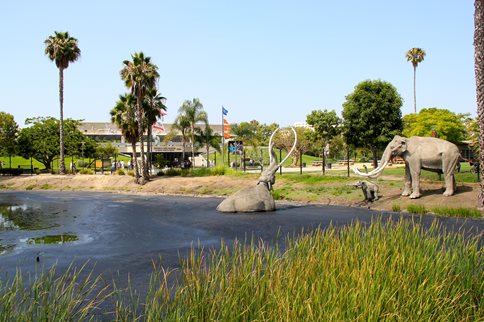
A reconstruction of a Columbian mammoth trapped in the Tar Pits. These large mammals would have attracted many smaller predators who also became trapped in this bituminoid graveyard.

The Smilodon or sabre-toothed cat liked to feast on juvenile mammoths as evidenced in a cave deposit in San Antonio, Texas.
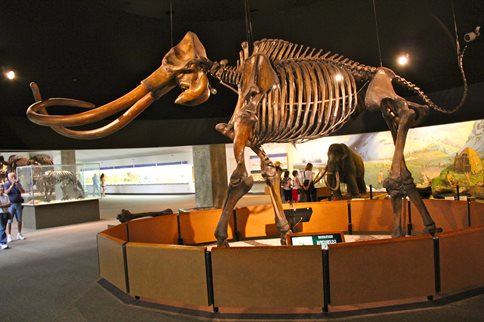
A composite skeleton of a Columbian Mammoth which is the only type of mammoth found at Rancho La Brea. The bones were discovered in 1914 mostly within Pit 9.

Skulls of 400 Dire wolves represent only a quarter of the remains of these packs found in the pits. They frequented the tar pits in search of quarry and became stuck in the tarry quagmire.
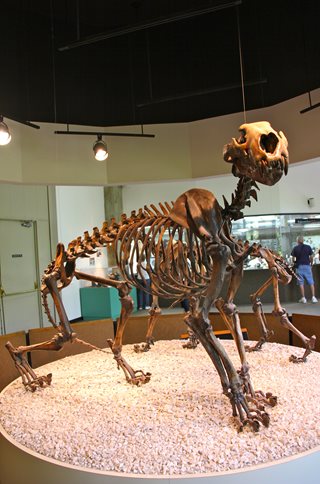
Naegele's Giant Jaguar was larger than today's African lion. It lived in the Los Angeles area which was colder and wetter than today as evidenced by the four types of flora species fossils also found in the tar pits. More than 80 of these specimens were trapped in the tar pits.
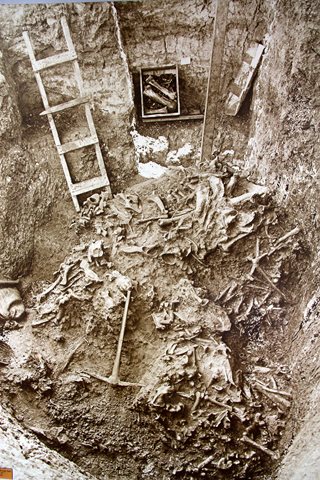
An earlier historical photo of finds in Pit 91 (above) that is now open to the public and is still in the process of further excavation although put on hold for several years (below).
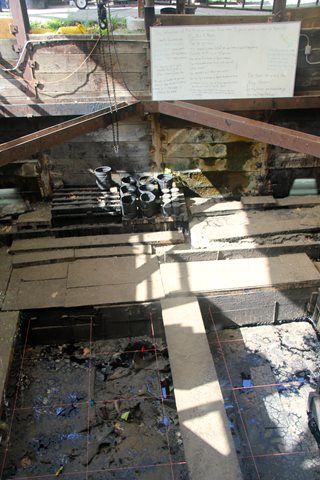
The following whiteboard that overhangs Pit 91 just about says it all!

All finds are cleaned, conserved and recorded in Page Museum's laborartories which is located nearby and is generously open for public viewing.
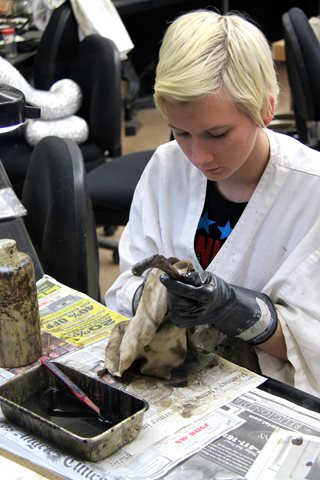
Despite the use of modern solvents and degreasers to clean the bones, they are all stained with the same smoky-coloured brush.
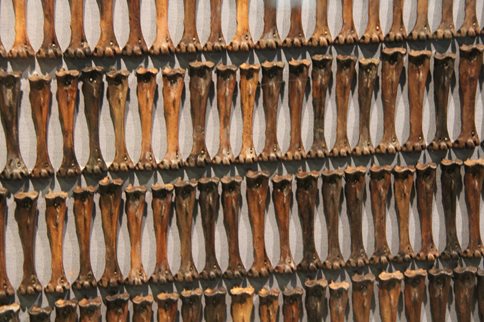
500 left leg bones of the most common bird species, the Golden Eagle (150 bird species in all). A thousand of these birds have been found.
The origins of La Brea Tar Pits' name is interesting: the Rancho La Brea' (the tar ranch) was one of the many land grants given to settlers by the Spanish government of New Spain. Coupled with the establishment of 23 Franciscan missions in Upper California, King Carlos III hoped to put a permanent cultural, economic and of course, religious stamp on their share of the American continent. In 1769 A.D. San Diego became the first mission settlement with Sonoma becoming the last mission settlement in 1823 A.D. The mission of San Gabriel was built in this area in 1771 A.D. with the 'El Pueblo de Neustra Senora la Reina de los Angeles' or town of Los Angeles established ten years later to support the missionaries' zeal and a series of coastal forts. Settlers soon used the tar pits by waterproofing their roofs and utilising it for fuel.
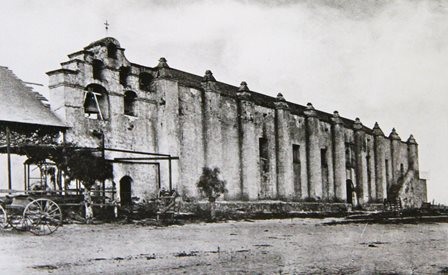
A formidable, fortress-like San Gabriel Mission